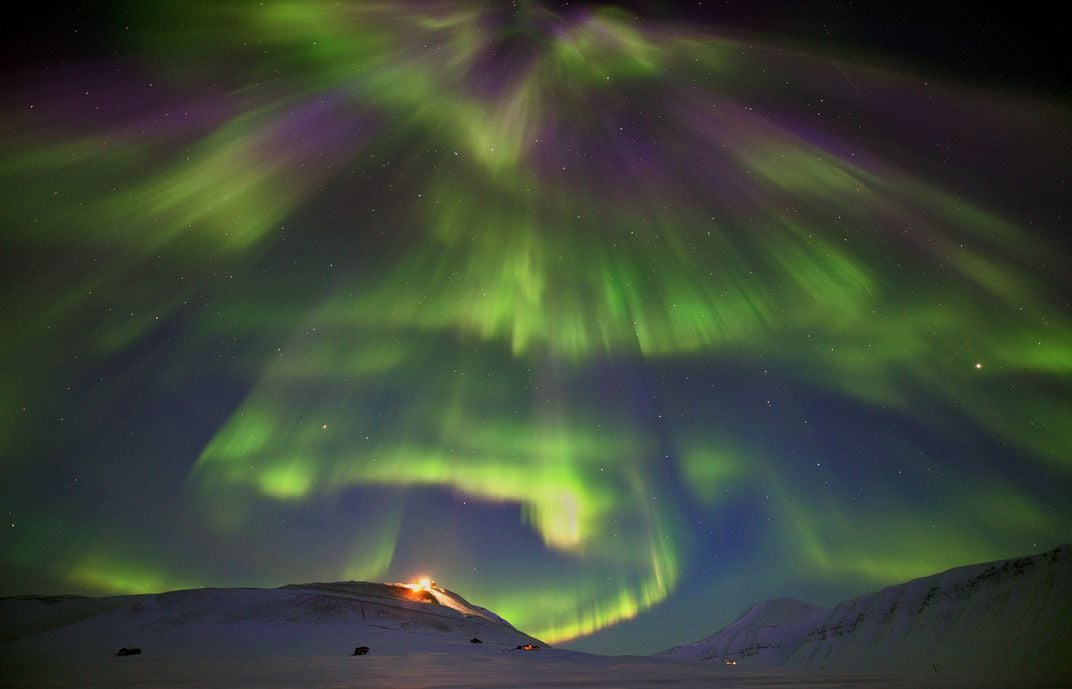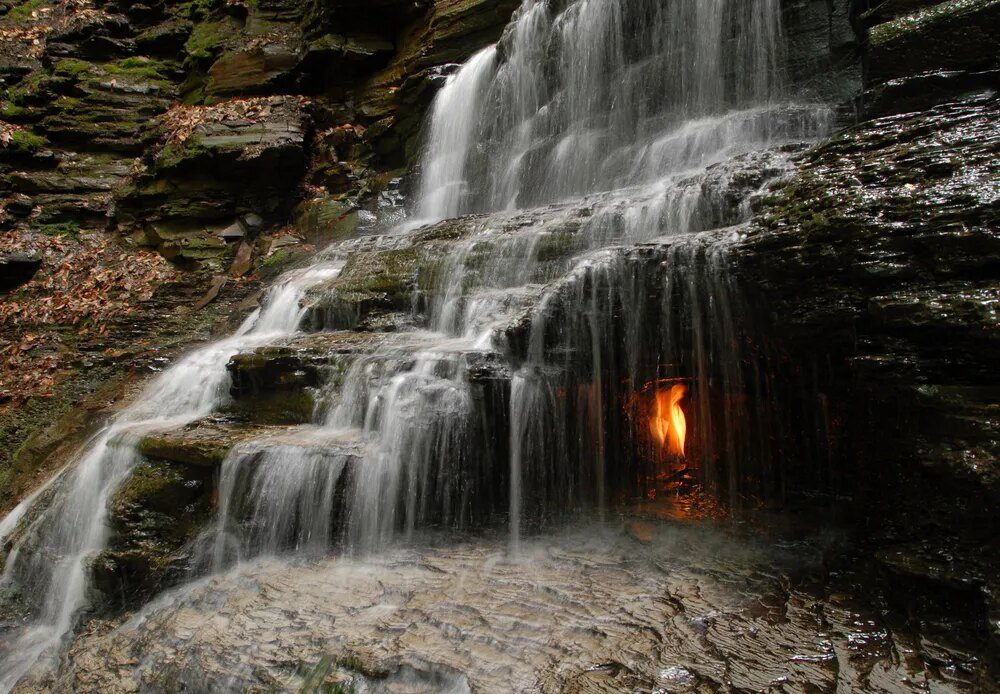This small, bucolic waterfall in Western New York has one highly photogenic feature: a grotto lit by a dancing orange flame.
Gregory Pleau/www.gregorypleau.com/Getty Images
Cleveland. Tromso, Norway. Gibbon, Nebraska. Rural Queensland, Australia. What do these far-flung locations have in common? They’re sites of some of the world’s most spectacular natural phenomena to witness.
These seven must-see marvels include an epic eclipse, a dazzling floral display, a massive bird migration, and a wild whirlpool that’s inspired poetry and prose for nearly a millennium. For many of these phenomena, the charm is in the ephemerality. You can visit Paris or Disney World or the beaches of Cancún any time, but Britain’s bluebells only bloom once a year, and the next total eclipse in the continental United States won’t be for several decades.
The Great American Eclipse
A boy watches the total solar eclipse through protective glasses in Madras, Oregon on Monday, Aug. 21, 2017. NASA/Aubrey Gemignani
On April 8, a total solar eclipse will cut a path diagonally across the United States, from southern Texas to northeastern Maine, plunging a spring afternoon into eerie darkness. Totality will last for a maximum of 4 minutes and 28 seconds, decreasing as the eclipse moves northeast. Eclipse-watchers are already snapping up hotel rooms and Airbnbs in cities along the path, from Austin to Little Rock to Cleveland to Buffalo to Burlington, Vermont. Eclipse glasses—a must for safe viewing—will likely skyrocket in price as the event nears, so get yours now. If you don’t catch this eclipse, your next chance for totality in the Lower 48 is 2044.
“It’s an event unlike anything else that you will ever witness,” says Jeff Rich, an astronomer and outreach coordinator at the Carnegie Observatories, in a video. “It’s a real surreal feeling.”
Extra-dramatic northern lights
The earliest known record of the northern lights dates back to around 679-655 B.C.E., when Assyrian astronomers documented an aurora on cuneiform tablets.
Stan Honda, Norway, 2015
Experts predict the dancing greens and purples of the northern lights will be at their most intense in two decades thanks to a solar maximum, or period of…
Click Here to Read the Full Original Article at Travel | smithsonianmag.com…
